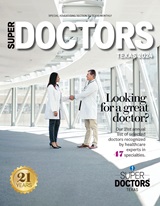The American Academy of Sleep Medicine
Press Release (AASM)
September 18, 2013
CONTACT: Lynn Celmer, 630-737-9700, ext. 9364, [email protected]
A new study suggests that people with obstructive sleep apnea (OSA) are perceived to appear more alert, more youthful and more attractive after at least two months of continuous positive airway pressure (CPAP) therapy.
“This study showed that independent human raters – both medical personnel and members of the community – can perceive improved alertness, attractiveness, and youthfulness in the appearance of sleepy patients with obstructive sleep apnea, after they have been compliant with use of CPAP at home,” said lead author and principal investigator Ronald D. Chervin, MD, MS, director of the Sleep Disorders Center at the University of Michigan in Ann Arbor, Mich. “These results show that the subjective impression of many clinicians, namely that their patients look more alert and sometimes more youthful after treatment for obstructive sleep apnea, may well be something that can be perceived by many other people.”
The study is in the Sept. 15 issue of the Journal of Clinical Sleep Medicine, which is published by the American Academy of Sleep Medicine.
Chervin and his research team studied 20 adults who have OSA and excessive daytime sleepiness. Digital photos of their faces were taken with a high-precision 3D camera before and after at least two months of CPAP therapy. Images were analyzed using computer software to assess the volume and color of the face. Twenty-two volunteers also viewed the images paired side-by-side in random order and rated them for alertness, youthfulness and attractiveness. Twelve of the raters were medical professionals, and 10 were volunteers from the community.
Results show that for the 20 subjects, an average of 68 percent of raters identified the post-treatment facial image as having a more alert appearance than the pre-treatment photo. Sixty-seven percent rated the post-treatment photo as more attractive, and 64 percent rated it as more youthful. Image analysis also found post-treatment decreases in forehead surface volume, which may reflect changes in nightly fluid shift, and decreased redness under the eyes and over the cheeks.
According to the authors, this is the first study to use objective, precise, digital photographic techniques to document changes in facial appearance after treatment for OSA. This is also the first study to document that these changes in facial appearance can be perceived by others.
According to Chervin, the study results could be motivational for the millions of people who have OSA.
“This may help convince patients to use their CPAP machines on a nightly basis,” he said.
The AASM reports that at least 12 to 18 million adults in the U.S. have untreated obstructive sleep apnea, which involves the repetitive collapse of the upper airway during sleep. OSA is a serious sleep illness that is associated with an increased risk of high blood pressure, heart disease, diabetes, depression and stroke. The most effective treatment option for OSA is CPAP therapy, which helps keep the airway open by providing a stream of air through a mask that is worn during sleep.
Help for people who have OSA is available from board certified sleep medicine physicians at more than 2,500 AASM accredited sleep disorders centers.
To request a copy of the study, “The Face of Sleepiness: Improvement in Appearance after Treatment of Sleep Apnea,” or to arrange an interview with the study author or an AASM spokesperson, please contact Communications Coordinator Lynn Celmer at 630-737-9700, ext. 9364, or [email protected].
The monthly, peer-reviewed Journal of Clinical Sleep Medicine is the official publication of the American Academy of Sleep Medicine, a professional membership society that improves sleep health and promotes high quality patient centered care through advocacy, education, strategic research, and practice standards (www.aasmnet.org).
The American Academy of Sleep Medicine considers sleep disorders to be illnesses that have reached epidemic proportions. Board-certified sleep medicine physicians in an AASM-accredited sleep center provide effective treatment. AASM encourages patients to talk to their doctor about sleep problems or visit www.sleepeducation.com for a searchable directory of sleep centers.

